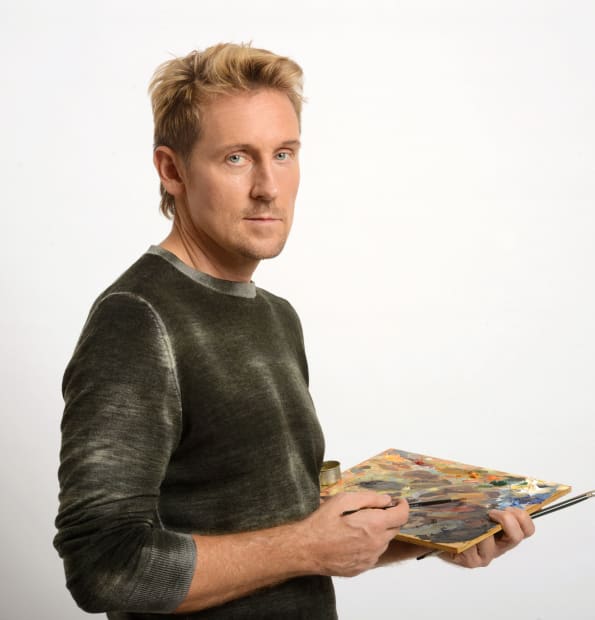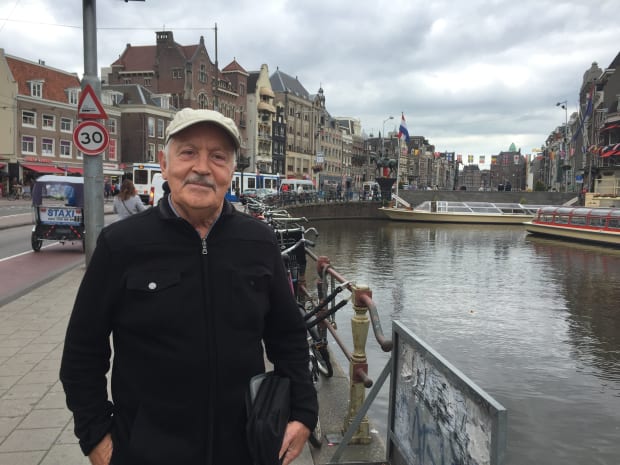-

THE ARTIST'S CREDO
To reflect the world in the mirror of the metaphor - this is the goal of the artist. Metaphor does not only belong to linguistic communication but can also be found in our daily life. Metaphor is the means of communication that we live by. First of all, the metaphor is aimed at the viewer's feelings and subconscious. It gives full rein to imagination, as it is the imagination that creates the connections between two seemingly different things. "Imagination is more important than knowledge. Knowledge has its limitations, while imagination has no limits." ~Albert Einstein. Metaphor leaves the mind open to grasp onto the hidden likeness of things and events and the more distant these things are, the greater the effect. The unexpectedness of the connection and sudden insight, which takes your breath away, is the true measure of the painting's value, according to the artist. Different from art that leaves us in speechless admiration (realism) or suggests we solve a puzzle made of symbols (abstract art), metaphorical art challenges our subconscious with the symbolism of artifacts. Any metaphor has its own story to tell. Metaphor "sees" through centuries, unveiling the images of the world and connecting notions created by civilization. At the same time, metaphor can easily reflect the complexities of our modern life, with its ambiguity and contradictions.
The painter's mission is to find a metaphorical "parallel" for every side of real life. The element of unexpectedness will shake up the viewer and awaken his artistic nature. The artist believes that the viewer's insight comes at once. It is not about discovering something new. His concept is similar to that of Plato who believed there is an ideal world, a "cave" that human souls once dwelled in. The "cave" retained their core ideas of things after they left. Therefore, the insight that comes when viewing art is a recollection of that. The artist's role is to stimulate this subconscious process of remembering through his art.
-

-

-

-
There are but a few branches of contemporary art that can undergo this kind of transfer. Metaphorical realism is so rich in ideas that the images it creates find their place in virtual reality too: in 2014 an electronic coloring book entitled "Aries the Sheep" was created for AppleTM users. This app was such a success with children all over the globe that it won the Ehon Award in Tokyo after being chosen from more than 200 electronic childrens' books from all over the world, games, and educational programs. Another interactive project – The Story 1&0 – followed in 2016. For Vladimir Kush, working with children goes beyond creating games and stories. He believes that children have an intact “inner region of fantasy,” which can be lost as we get closer to adulthood. At maturity, this imaginative ability is replaced by the practical drive for survival and the everyday dynamics of life. Therefore, works by the artist can be used successfully to help develop cognitive abilities.
Among more than 200 entries for “Where Does the Sun Go?” a creative work competition organized by Kush Fine Art as part of the School Community Partnership Program of Nevada, many participants presented a deep interpretation of the title subject and were highly regarded by the founder of metaphorical realism. This program highlighted how perceptive a child’s mind is of everything that surrounds us. Henry Miller recognized that although people think they are surrounded by the facts of life, they don't realize that they are walking through the forest of symbols. Our thinking is, in essence, metaphorical. We use metaphors every day in spoken language – often without realizing that the impact from the visual metaphor may be even more powerful than the spoken metaphor. Vladimir Kush’s style of metaphorical realism is an evolution of this thought process. However, no contemporary style can rescue a bad painting, so it is worth remembering one more dictum from Dali, the great master: “Begin by learning to draw and paint like the old masters”
-

-






